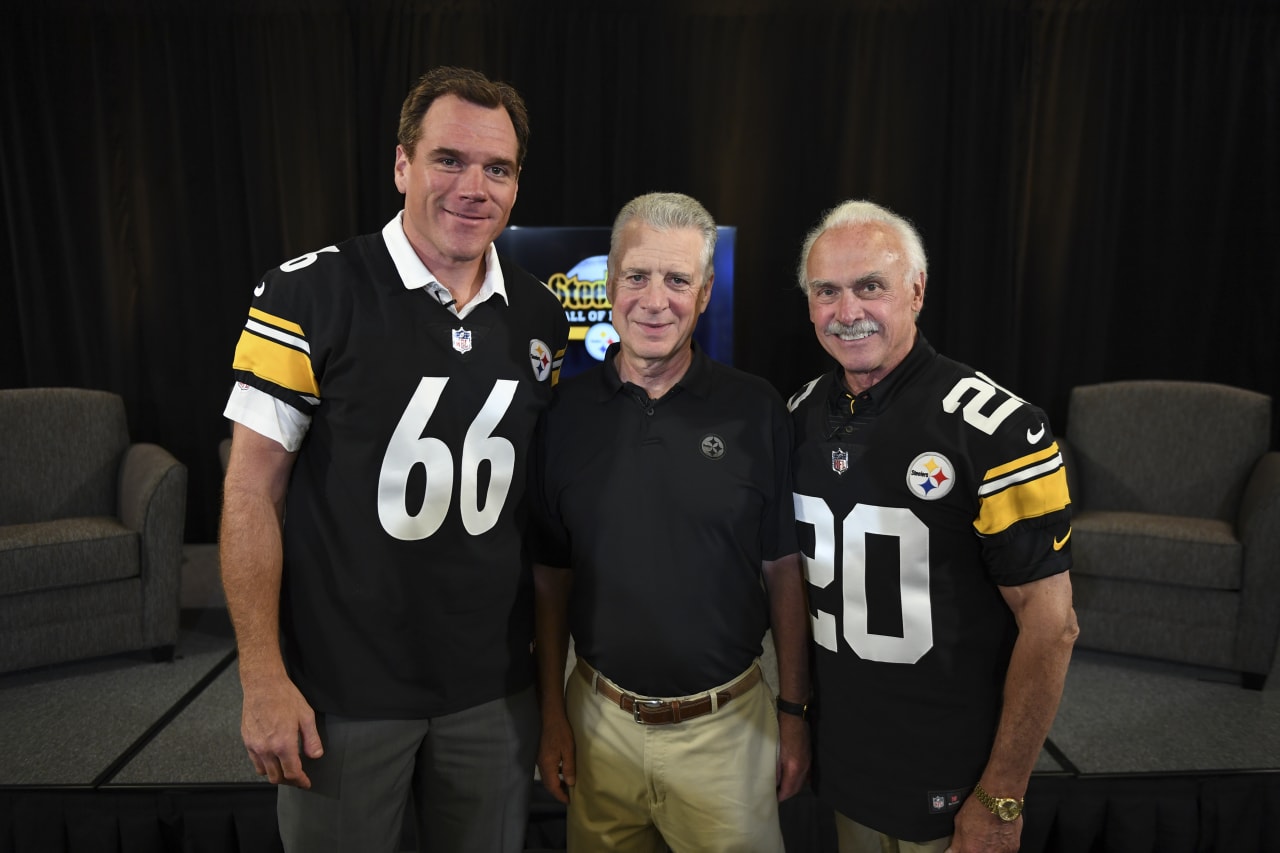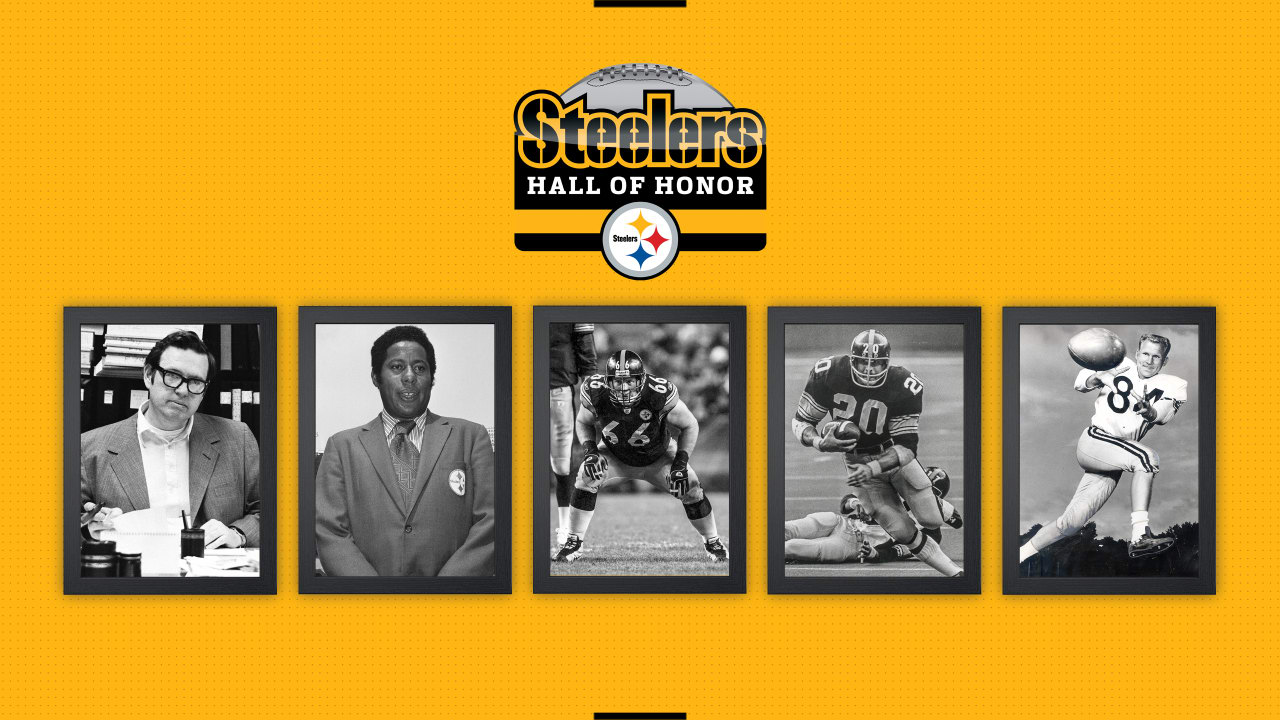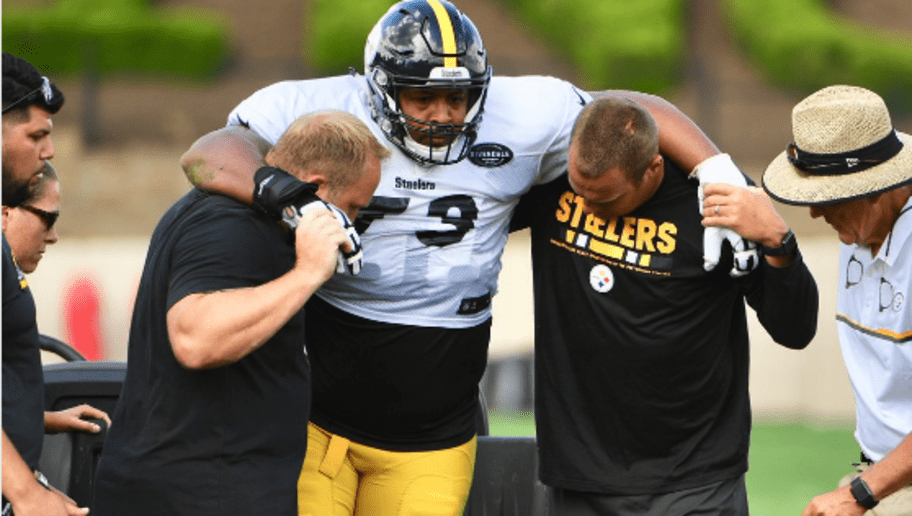By Bill Barnwell
July 31, 2018

Steelers tight end Jesse James reacts after scoring what looked to be the game-winning TD vs. the Patriots last season. (Photo by Jim Davis/The Boston Globe via Getty Images)
On Monday, we used underlying metrics from 2017 to project which teams are most likely to improve upon last season's record. Today, we look in the opposite direction to try to identify the teams that have the best chance of declining in 2018. The numbers mentioned below have exhibited some ability to project future performance in the past. You can read more about those metrics here.
Point differential in 2017: +98
Pythagorean expectation: 10.5 wins
Record in games decided by seven points or fewer: 8-2 (.800)
Strength of schedule: 0.497 (14th-toughest in NFL)
Pythagorean expectation: 10.5 wins
Record in games decided by seven points or fewer: 8-2 (.800)
Strength of schedule: 0.497 (14th-toughest in NFL)
By point differential, the Steelers and Ravens finished in a dead heat in 2017. Pittsburgh outscored the opposition by 98 points, and Baltimore topped teams by 92 points. The Steelers finished third in DVOA, and the Ravens, in sixth, weren't far behind. The primary reason Pittsburgh won 13 games and Baltimore won only nine is the Steelers swept the Ravens and went 8-2 in games decided by one score, while the Ravens went 2-4 in those same contests.
The Steelers were certainly a good team independent of their record in close games, but they really pulled out some squeakers:
- In Week 6, the Steelers came up with a goal line stand against the Chiefs in the fourth quarter of what would eventually be a 19-13 victory.
- In Week 8, Pittsburgh led the Lions 20-12 heading into the fourth quarter, only for the Lions to shoot themselves in the foot. Jim Caldwell kicked a field goal from the 1-yard line on fourth-and-1 (after failing on a fourth-and-goal in the same situation earlier in the half), Golden Tate fumbled away a ball on the Pittsburgh 24-yard line and the Lions came up short on a late drive that ended inside the 10-yard line.
- In Week 10, Ben Roethlisberger converted a second-and-17 with 1:26 left into a first down in two plays of a tied game with the Colts before Chris Boswell hit a 33-yard field goal as time expired.
- In Week 12, Roethlisberger drove the Steelers 35 yards in 13 seconds before Boswell hit a 53-yarder to beat an Aaron Rodgers-less Packers team in Lambeau 31-28.
- In Week 13, the Steelers trailed 17-3 at halftime to the Bengals in the game in which Ryan Shazier suffered his career-threatening injury before fighting their way back and winning on another Boswell field goal as time expired 23-20.
- In Week 14, they trailed the Ravens 38-29 with 6:45 to go, only for Roethlisberger to lead them back for 10 points in just under six minutes, with Boswell again hitting a game winner from 46 yards out with 46 seconds to go.
You also remember the game Pittsburgh didn't pull out, when it trailed the Patriots 27-24 with 56 seconds left to go. Roethlisberger hit JuJu Smith-Schuster for 69 yards and then completed a pass to Jesse James for what looked to be a game-winning touchdown, only for the Steelers tight end to be laid low by the catch rule. Roethlisberger threw an interception two plays later.
Of course, it would be easy to look at a veteran team like the Steelers and assume they have some secret to pulling out football games when they need a stop, but that hasn't been the case under Mike Tomlin. The 8-2 performance is an outlier -- the Steelers were 41-38 in games decided by seven points or fewer under their longtime coach before the 2017 season. And when you look at teams that won six more close games in a season than they lost (or plus-6, to make it easier), those squads did not keep it up the following year. A group that includes veteran teams such as the 1999 Titans, 2004 Steelers and 2015 Broncos went 101-23 in the close ones during their standout campaign but followed it by going a combined 38-37 in one-score games the following season. Their overall record declined by an average of nearly three wins.
Sadly, there also have to be concerns about the Steelers defense without its star linebacker Shazier, given that it struggled mightily after he suffered his spinal injury on Dec. 4. Pittsburgh allowed 17.8 points per game through the Bengals contest, which was the fifth-best mark in the league. The Steelers defense was seventh in Win Probability Added over that time frame. Afterward, though, the Steelers allowed an average of 28 points per game, including 38 to the Ravens, 27 to the Patriots, 24 to the Browns and 38 to the Jaguars (with a defensive touchdown making it 45). Their only effective defensive performance after the Shazier injury came against T.J. Yates and the Texans.
The on-/off-field splits for Shazier support the rise. Opposing runners averaged 4.1 yards per carry and a 21.1 percent first-down rate with the star linebacker on the field and 5.1 yards per carry with a 27.4 percent conversion rate with him sidelined. Quarterbacks facing the Steelers posted a 34.9 Total QBR with Shazier at linebacker and a 58.4 QBR with him unavailable.
Strangely, Pittsburgh didn't do much to address the position this offseason, choosing to bring in special-teamerJon Bostic, who has struggled when used as a defender in multiple locations. Morgan Burnett could take some snaps there on passing downs, but the competition appears to be between Bostic and Tyler Matakevich. Teams are going to attack the Steelers at inside linebacker until Pittsburgh proves it can hold up there.
On the other hand, the Steelers got a rare season in which both Roethlisberger and Le'Veon Bell were healthy for the entire campaign. Each sat out the Week 17 win over the Browns, but Pittsburgh's star duo stayed on the field for the other 15 games, marking just the second time in their time together that they've managed to stay healthy (if not active) for an entire season. Antonio Brown missed only one game due to injury, and Pittsburgh's offense was the sixth-healthiest in the league by Football Outsiders' Adjusted Games Lost metric.
All of this isn't to suggest the Steelers will be bad. As long as Roethlisberger doesn't suffer a debilitating injury or drop off suddenly at the age of 36, the Steelers should be favored to make a return trip to the playoffs. With the Ravens likely transitioning from Joe Flacco to Lamar Jackson at quarterback during the season, any growing pains from Baltimore's quarterback-to-be would hand Pittsburgh an easier path to the division title, barring an unexpected rise from the Bengals or Browns. The Steelers should be in the thick of things come January, as always, but it's more likely to be as a 10-win or 11-win team this time around.





